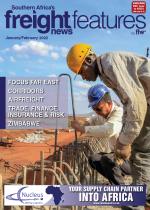As available capacity out of the East remains constrained, with carrier schedules erratic, alternative, non-traditional routings are essential for the planning of LCL cargo. This is according to Michelle Horner, CFR Freight trade manager, who says that schedules and routings that worked pre-Covid-19 are now no longer necessarily the most viable solutions available to meeting today’s logistics requirements.“Customers’ needs have changed – and although cargo lead time is critical, our clients are looking to get cargo onto the water as quickly and as efficiently as possible,” she told Freight News. “Vital to the success of this is to have existing relationships with these alternative hubs. As intra-Asia congestion worsens, and conventional transhipment hubs continue to struggle with delays, direct LCL services into South Africa have gone from a luxury to a necessity, and CFR Freight continues to build on our direct LCL options. This focus is not only out of China, but covering Asia Pacific and Oceania regions. With our ZacPak container freight stations (CFS’s) and inter-depot services, we are able to link all destinations in South Africa to the full range of direct CFS to CFS ser v ices.”According to trade coordinator Kreeson Moodley, as available capacity out of the East remains constrained, the need for innovative solutions is of critical importance.“Globally, the challenges being faced by the logistics industry are capacity and erratic carrier schedules. The Transpacific trade, which sees substantial high cargo demand and severe delays along the West Coast of the US, has had a worldwide impact,” explained Mo o d l e y. “A s this trade has high demand for both equipment and vessel capacity, there is reduced availability on the equipment and vessels into and out of South Africa as capacity is sourced onto the horizontal trade lanes. The Far East-South Africa trade has experienced reduced space and equipment, coupled with soaring freight costs.”Covid-19 restrictions throughout Asia, and electricity shortages in China, have further inf luenced cargo manufacturing lead times, resulting in further pressure on already constrained logistics services.“With manufacturing patterns changing, we have placed ourselves well with existing pedigreed direct consolidations from South East Asia and the Indian subcontinent,” he said.According to Horner, the Far East region remains an integral part of the South African supply chain. “It is with this in mind that we continue to liaise with our clients and partners to ensure efficient LCL services both into and out of South Africa. Traditionally high volumes of goods, including, but not limited to, automotive components, textiles, footwear, toys, electronics and cosmetics are imported from the Far East. As importers have struggled to maintain stock levels and deal with higher pricing, alternative suppliers are being sourced. As customer needs and demands change, we and our global partners will continue to provide f luid and f lexible LCL solutions to suit the supply chain demands of the market.”Commenting on trends, Horner and Moodley said often carrier freight pricing increased and capacity was severely constrained due to increased demand for space during the Chinese Golden Week in the first week of October and Chinese New Year, usually around the end of January or beginning of February. “Further to this, we often see a peak in demand for space building up to Christmas, as suppliers push to get their stock out to the market in time for the festive holidays. These traditional peaks and troughs are, however, being replaced by a permanent need for capacity from Asia. There doesn’t seem to have been time for manufacturers to amend their production lead times and the congestion at transhipment hubs seems not to have been resolved.”

